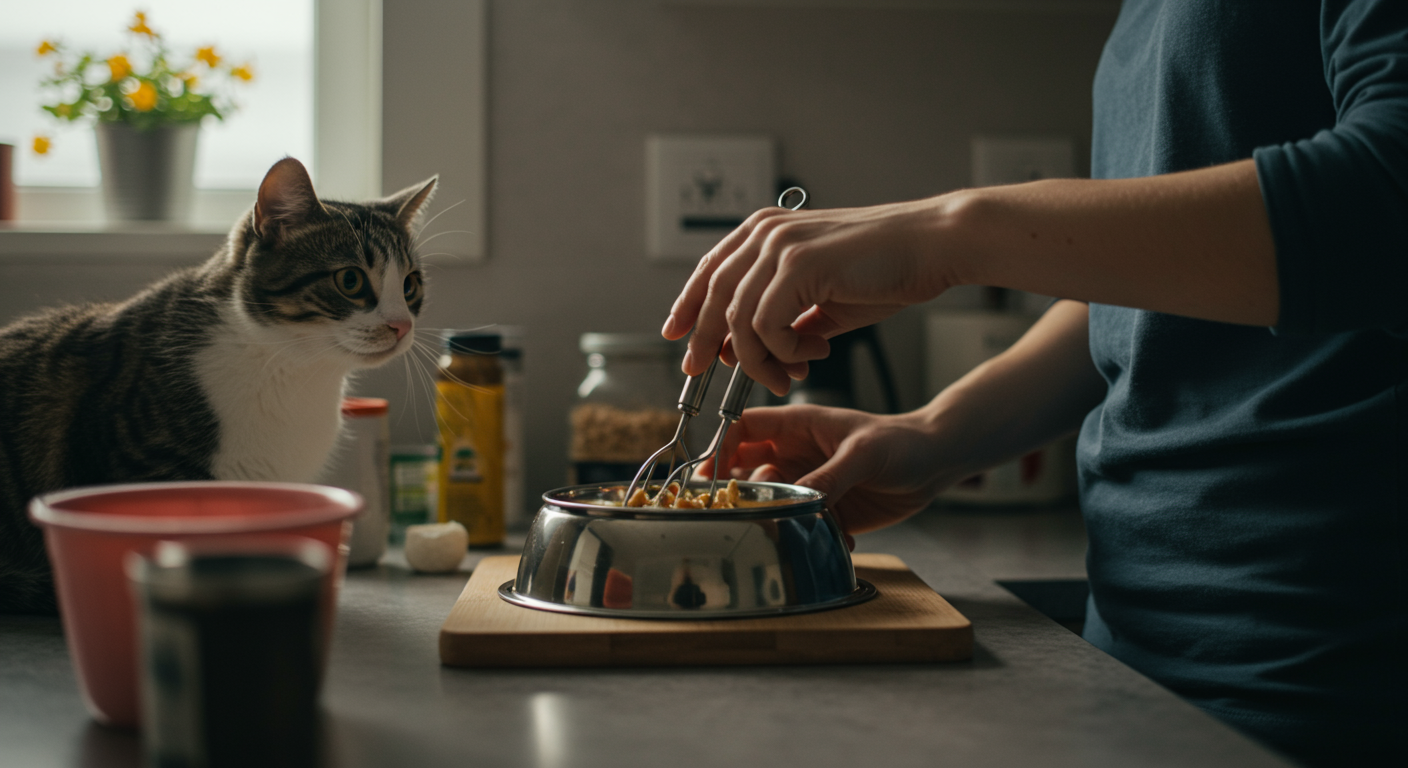Welcoming a new cat into your home is an exciting journey, and understanding their nutritional needs is a crucial first step. This guide is designed to provide new cat owners with essential information to ensure their feline friend thrives. We'll cover everything from choosing the right cat food to understanding portion control and addressing specific dietary requirements.

Why Understanding Cat Nutrition is Crucial for Your New Pet
Cats are obligate carnivores, meaning they require a diet primarily based on animal protein to survive and thrive. Proper nutrition impacts every aspect of your cat's health, from their energy levels and coat quality to their immune system and overall longevity. A well-balanced diet can prevent various health issues, maintain a healthy weight, and contribute to a long, happy life for your cat. As a new pet owner, prioritizing your cat's nutrition is one of the best investments you can make in their well-being.
Essential First Steps for Cat Care
- Choose High-Quality Cat Food: Start by selecting a cat food that lists a named meat source (e.g., chicken, turkey, salmon) as the primary ingredient. Look for foods that are formulated to meet the nutritional standards established by the Association of American Feed Control Officials (AAFCO) for your cat's life stage (kitten, adult, or senior).
- Understand the Label: Learn to read cat food labels. Pay attention to the guaranteed analysis, which provides information on the percentages of protein, fat, fiber, and moisture. Also, look for the ingredient list, where ingredients are listed in descending order by weight.
- Provide Fresh Water: Always have fresh, clean water available for your cat. This is essential for hydration and overall health.
Common Challenges & How to Overcome Them
- Picky Eaters: Some cats can be finicky. Try different flavors and textures (dry, wet, or a combination) to see what your cat prefers. Warming wet food slightly can also make it more appealing.
- Overeating: Portion control is key to preventing obesity. Use a measuring cup to ensure you're feeding the correct amount, and avoid free-feeding, especially with dry food.
- Food Allergies/Sensitivities: If your cat shows signs of allergies (itching, skin problems, digestive issues), consult your vet. They may recommend a limited-ingredient diet or an elimination diet to identify the trigger.
Tips for Success (e.g., basic training, feeding schedules)
- Establish a Feeding Schedule: Feed your cat at consistent times each day. This helps regulate their appetite and can prevent begging. Most adult cats do well with two meals a day.
- Portion Control is Key: Follow the feeding guidelines on the cat food package as a starting point, but adjust based on your cat's body condition and activity level. Your vet can help you determine the ideal amount.
- Introduce New Foods Gradually: When switching foods, introduce the new food gradually over 5-7 days to avoid digestive upset. Mix a small amount of the new food with the old food, gradually increasing the proportion of the new food.
- Consider Puzzle Feeders: Puzzle feeders can make mealtimes more engaging and slow down fast eaters. They provide mental stimulation and can help prevent overeating.
Building a Strong Bond with Your Cat
Mealtimes can be a great opportunity to bond with your cat. Stay present while your cat eats, and make the experience enjoyable by providing a calm, comfortable environment. Interact with your cat while they are eating.
Recommended Products for New Owners
When choosing cat food, focus on high-quality options that meet your cat's specific needs. Consider options from well-regarded brands, such as:
- Dry food: Look for brands that offer balanced nutrition for different life stages and activity levels.
- Wet food: provides essential moisture and can be a great addition to a cat's diet.
Food Bowls
The right food bowl can make a big difference in your cat’s mealtime experience. Elevated bowls are recommended as they improve digestion and reduce neck strain, making it easier for your cat to eat comfortably.
Measuring Cups
Accurate portioning is crucial, and using a measuring cup can help you manage your cat's weight and prevent overfeeding.
Quick Troubleshooting Guide
- Diarrhea or Vomiting: If your cat experiences digestive upset, consult your vet. It could be due to a food sensitivity, a sudden diet change, or a more serious health issue.
- Lack of Appetite: If your cat stops eating, it's essential to determine the cause. It could be due to illness, stress, or a change in their environment. Consult your vet if the problem persists.
- Excessive Weight Gain: Adjust your cat's food portions and encourage exercise. Your vet can help you develop a weight-loss plan if needed.
Next Steps in Your Pet Parenthood Journey
As your cat grows, their nutritional needs may change. Continue to monitor their weight, body condition, and overall health. Regular vet check-ups are essential to ensure your cat is thriving, so you can adjust their diet as needed.